Preventing child sexual abuse starts with caring adults taking 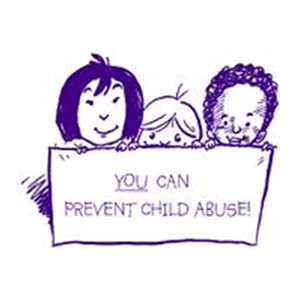 responsibility for protecting children and youth. Know what to communicate to your child, behaviors to watch out for and steps to take to keep children safe.
responsibility for protecting children and youth. Know what to communicate to your child, behaviors to watch out for and steps to take to keep children safe.
One of the most important things to keep in mind is that children are most often abused by someone they know and trust. In more than 90% of sexual abuse cases, the child knows their perpetrator personally – he or she is a family member, childcare provider, friend, neighbor or other trusted person. Perpetrators, who can be adults 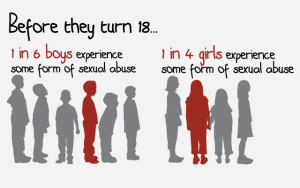 or youth, usually have permission to be around the child on a regular basis. If someone is “too good to be true,” ask more questions. Even a close friend or relative may not be a safe person for your children.
or youth, usually have permission to be around the child on a regular basis. If someone is “too good to be true,” ask more questions. Even a close friend or relative may not be a safe person for your children.
Body Parts and How Things Work
Children with accurate information about healthy sexual development are better protected from sexual abuse. It is common for parents to have questions about what healthy sexual development is at different stages of a child’s life. The degree to which you are comfortable talking about this with your child may depend on your own up-bringing, how your parents may or may not have explained sexuality to you as a child, or maybe even your own history of abuse. Keep a few things in mind:
- Understand age-appropriate behaviors and communicate them to your children throughout their childhood. Ensure your children know they can come to you to answer questions about sex instead of someone else who may be misinformed, manipulative or even abusive. What is appropriate?
- Keep conversations honest, respectful and developmentally-appropriate. This helps lay the foundation for a lifetime of open communication between you and your children about all kinds of things.
- Use the proper terms for all body parts, including genitals. Giving children the correct language empowers them to understand their bodies, ask questions and tell you about any behavior that could lead to sexual abuse. It also sends the message that their bodies are special and their own, nothing to be ashamed or embarrassed about.
- Practice tough conversations before you have them. Look for windows of opportunity and “teachable moments,” and don’t send the message that these topics are off limits or restricted to a one-time conversation.
Remember that each of these conversations evolves as your child reaches different stages of development and adolescence, and there are many great books and websites that can help you along the way. View additional resources for more information.
Boundaries, Privacy and Consent
When everyone is clear on rules and expectations, everyone is safer. Teach your children about boundaries, privacy and consent, and ensure that everyone who cares for your child is aware of and agrees to abide by your family rules.
- Teach children that they have the right to say “no” when it comes to their bodies. Some see “no” from a child in regards to
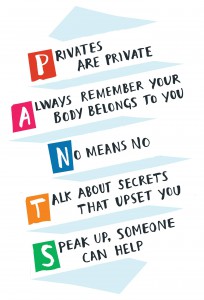 hugs, etc. as being disrespectful and disobedient, but this is an important way to teach and respect consent when it comes to one’s own body. Reinforce this boundary during everyday interactions like wrestling with siblings, hugging or tickling, so when your child says “stop” or “no,” ensure that the behavior does indeed stop.
hugs, etc. as being disrespectful and disobedient, but this is an important way to teach and respect consent when it comes to one’s own body. Reinforce this boundary during everyday interactions like wrestling with siblings, hugging or tickling, so when your child says “stop” or “no,” ensure that the behavior does indeed stop.
You may need to explain to the adults around you why a child’s ability to say “no” is important for their safety. You might feel uncomfortable about potentially hurting a family member’s feelings, but remember, your child’s safety is most important.
- Be clear with adults and children about the difference between OK touch and inappropriate touch. Talk to your child about “personal safety zones,” and help them pay attention to their own feelings of uneasiness when someone makes them feel uncomfortable in their personal space. For younger children, teach more concrete rules such as “talk with me if anyone – family, friend or anyone else – touches your private parts.” Also teach kids that they are also not allowed to touch anyone else’s body without consent.
- Explain the difference between a secret and a surprise, and that no adult should ever ask a child to keep a secret. Abusers use secrecy to gain and maintain access to their victims, so everyone needs to know how secrets may make kids unsafe. Talk about how surprises are OK and a fun way to plan something special for someone we love, but secrets exclude others and hurt people.
Remember: you are your child’s ultimate role model. Show your child that these rules apply to everyone!
Create a Family Safety Plan
A family safety plan is a written document that outlines your family’s rules. Having guidelines for appropriate behavior visible in your 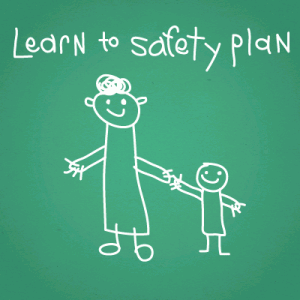 home helps ensure that everyone – your children, extended family members and other caregivers – is on the same page about safety and respect. Print out our free template, and complete with your children, then hang in a visible place in your home and review it together often.
home helps ensure that everyone – your children, extended family members and other caregivers – is on the same page about safety and respect. Print out our free template, and complete with your children, then hang in a visible place in your home and review it together often.
Behavioral Warning Signs
More than 90 percent of sexual abuse is perpetrated by someone the child knows, such as a family member, friend, coach, daycare provider or other caregiver. Know what concerning behaviors to look out for in adults and older children that could lead to sexual abuse:
- having poor personal boundaries
- being overly interested in relationships with children
- holding inappropriate sexual conversations around children
- singling out a child for “special attention”
- seeking out one-on-one time with child
- not being respectful of a child’s “no”
These behaviors should raise your antenna and move you to take action.
Observe, Intervene and Speak up
Be proactive in safety planning for your child, and don’t be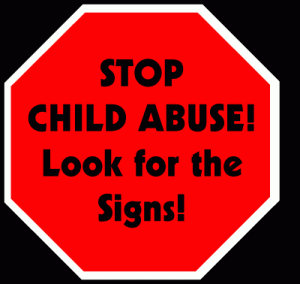 embarrassed to ask questions or intervene in concerning situations. Take the time to plan for safety, talk and listen, and voice your concerns.
embarrassed to ask questions or intervene in concerning situations. Take the time to plan for safety, talk and listen, and voice your concerns.
- Ask questions of your child’s daycare, school and recreational activities. Every organization that cares for your child should have policies to prevent abuse, including background and reference checks for staff members, professional trainings for preventing sexual abuse and rules regarding unsupervised or one-on-one time between adults and children.
- Let people know you are aware and observing. Drop in unexpectedly on your child’s activities from time to time to ensure your other caregivers know you are watching. Safety is increased when everyone around your children knows that you are an active and observant caregiver!
- Decrease isolation. The majority of sexual abuse cases occur during one-on-one situations, so limit the time that adults or older youth have alone with children. And be aware of children and families who may be especially vulnerable, such as children with disabilities or families in high-stress situations.
- Speak up when you observe concerning or inappropriate behaviors, even if the person exhibiting these behaviors is a member of your family or an older youth. It’s normal to feel uncomfortable having difficult conversations, but remember that a child’s safety trumps our own discomfort or embarrassment. If you feel you can’t have a conversation with someone who is being inappropriate, find someone who can and who will help you intervene.
- Trust your instincts. Report anything you know or suspect might be sexual abuse to ChildLine (the child abuse hotline) at 1-800-932-0313. It is never easy to report abuse, especially if it is someone you know. But remember, it is our responsibility as adults to speak up and stop abuse.